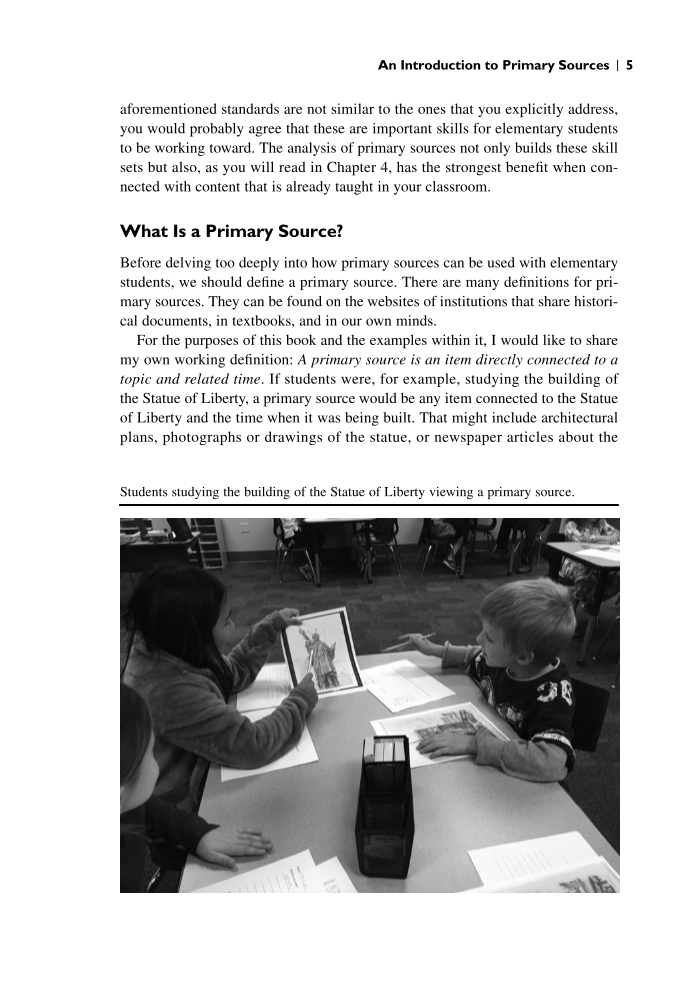aforementioned standards are not similar to the ones that you explicitly address, you would probably agree that these are important skills for elementary students to be working toward. The analysis of primary sources not only builds these skill sets but also, as you will read in Chapter 4, has the strongest benefit when con- nected with content that is already taught in your classroom. What Is a Primary Source? Before delving too deeply into how primary sources can be used with elementary students, we should define a primary source. There are many definitions for pri- mary sources. They can be found on the websites of institutions that share histori- cal documents, in textbooks, and in our own minds. For the purposes of this book and the examples within it, I would like to share my own working definition: A primary source is an item directly connected to a topic and related time. If students were, for example, studying the building of the Statue of Liberty, a primary source would be any item connected to the Statue of Liberty and the time when it was being built. That might include architectural plans, photographs or drawings of the statue, or newspaper articles about the An Introduction to Primary Sources | 5 Students studying the building of the Statue of Liberty viewing a primary source.
Document Details My Account Print multiple pages
Print
You have printed 0 times in the last 24 hours.
Your print count will reset on at .
You may print 0 more time(s) before then.
You may print a maximum of 0 pages at a time.

























































































































































































